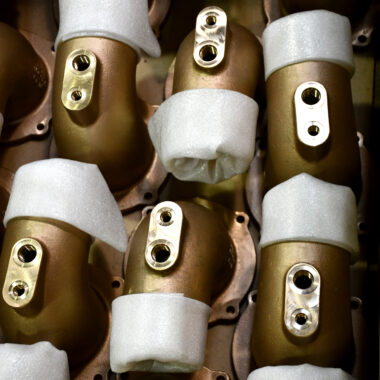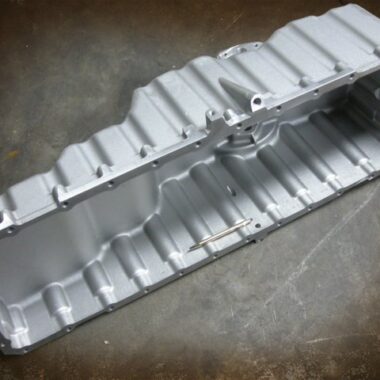Transform Your Manufacturing with Aluminum Casting Innovations
Wiki Article
The Top Strategies for Aluminum Spreading That You Required to Know
In the realm of light weight aluminum spreading, precision and competence are critical. Comprehending the subtleties of various casting methods can dramatically impact the quality and effectiveness of the end product. From the typical sand casting technique to the complex financial investment spreading procedure, each technique offers special advantages that accommodate various job needs. As we browse via the leading strategies for light weight aluminum casting, it comes to be noticeable that understanding these methods is essential for accomplishing optimal results. Let's check out the ins and outs of these methods and exactly how they shape the world of aluminum spreading.Sand Spreading Method
The Sand Casting Strategy is a basic technique in aluminum spreading, extensively used for its cost-effectiveness and flexibility in creating detailed steel shapes. This strategy includes creating a mold and mildew made from compacted sand right into which liquified aluminum is put, enabling it to take the shape and strengthen of the mold. One of the essential advantages of sand spreading is its ability to generate complicated geometries with relatively reduced tooling expenses, making it an eye-catching choice for producers looking to produce unique parts.In the sand casting procedure, a pattern of the last part is pushed into a great sand mixture had within a flask. Once the pattern is gotten rid of, a tooth cavity standing for the final component's shape is left in the sand. Molten light weight aluminum is then poured right into the cavity, taking and loading the space on the exact information of the pattern. After the aluminum cools and strengthens, the sand mold and mildew is damaged away, exposing the freshly cast aluminum part. Sand spreading is generally used in numerous industries, including auto, aerospace, and art foundries, because of its capacity to generate both huge and small metal elements with detailed designs.

Financial Investment Casting Refine
An elaborate approach utilized in aluminum spreading is the Investment Casting Refine, understood for its ability to create highly described and elaborate metal components. Referred to as the lost-wax spreading process, this strategy dates back thousands of years and remains a preferred selection in different sectors due to its flexibility and accuracy.The investment casting procedure starts with the creation of a wax pattern, which is coated with a ceramic covering to form a mold and mildew. The wax is after that melted out, leaving a tooth cavity in the form of the desired part. Molten aluminum is put into the ceramic mold, loading the cavity and taking on the intricate details of the initial wax pattern.
This method is favored for its capability to generate complex shapes with exceptional surface area coating and dimensional precision. It is commonly used in the production of aerospace elements, precious jewelry, and commercial machinery where elaborate styles are called for. The investment casting process uses high repeatability and can generate components with marginal machining required, making it an economical selection for lots of applications.
Irreversible Mold And Mildew Method
Utilizing a different method from the Investment Casting Refine, the Permanent Mold Technique in aluminum have a peek at this website spreading uses an unique technique for creating steel elements. The heat transfer from the molten metal to the mold and mildew assists in solidifying the light weight aluminum swiftly, minimizing the cooling time compared to sand spreading.One of the essential advantages of the Irreversible Mold Method is the boosted surface coating and dimensional accuracy of the spreadings produced. This method is likewise known for its capacity to create high-strength light weight aluminum elements with consistent high quality. Furthermore, the reusable nature of the mold makes it a cost-efficient choice for medium to high volume manufacturing runs.
Die Spreading Innovation
Utilizing innovative manufacturing processes, pass away casting modern technology presents an extremely reliable technique for producing elaborate light weight aluminum components. This technique includes infusing liquified aluminum right into a steel mold, understood as a die, at high stress. The die is specially developed to form the light weight aluminum right into the desired form, causing high precision and outstanding surface area coating.
Pass away casting deals several advantages. It permits the production of intricate shapes with thin walls, tight tolerances, and smooth surfaces, making it suitable for applications where aesthetics and precision are essential. In addition, die casting enables rapid production rates, reducing overall manufacturing time and costs.

Lost Foam Casting Technique
Die casting modern technology's efficiency and precision in producing light weight aluminum components lead the means for exploring the Lost Foam Casting Technique as a corresponding manufacturing method. Lost Foam Casting, also known as evaporative pattern spreading, is an approach that utilizes foam patterns to produce complex aluminum components.One of the essential benefits of Lost Foam Casting is its ability to create complex designs with detailed information that might be challenging to accomplish via typical casting methods. In addition, this strategy eliminates the need for cores, decreases machining procedures, and enables tighter resistances. Lost Foam Casting is specifically appropriate for tiny to medium-sized aluminum parts that call for high precision and complex geometries. aluminum casting. As industries proceed to demand lightweight yet resilient parts, Lost Foam Casting confirms to be an important method in the world of light weight aluminum spreading.
Conclusion
Finally, understanding the top techniques for light weight aluminum spreading is essential for accomplishing high-quality check that lead to the manufacturing process. Sand casting, financial investment spreading, irreversible mold and mildew, die casting, and shed foam casting are all effective methods for generating aluminum components with various levels of complexity. By understanding these methods, manufacturers can ensure that their items meet the preferred requirements and criteria for efficiency and longevity.
From the standard sand spreading technique to the elaborate investment casting procedure, each method offers special advantages that cater to various job needs.The Sand Casting Strategy is a basic technique in light weight aluminum casting, commonly used for its cost-effectiveness and convenience in producing elaborate steel shapes. Lost Foam click here for more Casting, also known as evaporative pattern spreading, is a technique that utilizes foam patterns to create detailed aluminum parts. As sectors continue to require light-weight yet long lasting parts, Lost Foam Spreading proves to be a valuable technique in the realm of aluminum casting.
Sand casting, investment casting, irreversible mold and mildew, pass away spreading, and shed foam spreading are all efficient approaches for producing aluminum parts with various levels of intricacy.
Report this wiki page